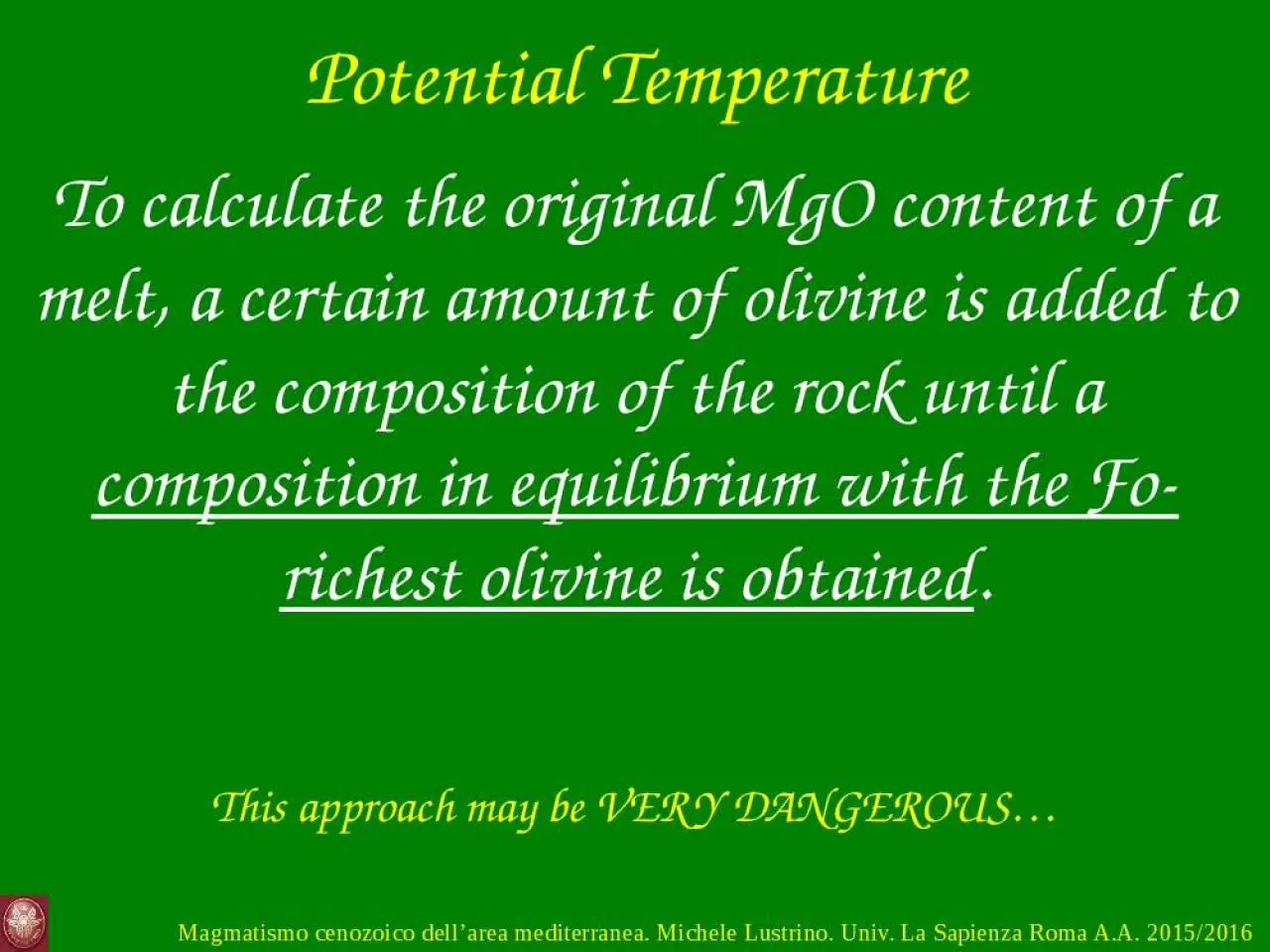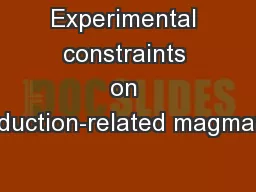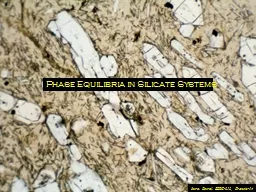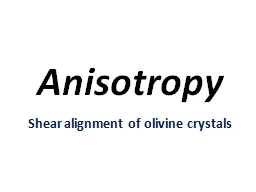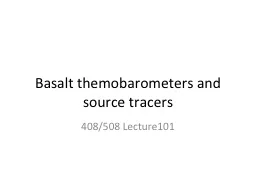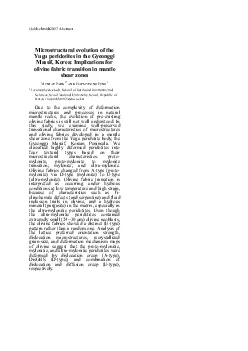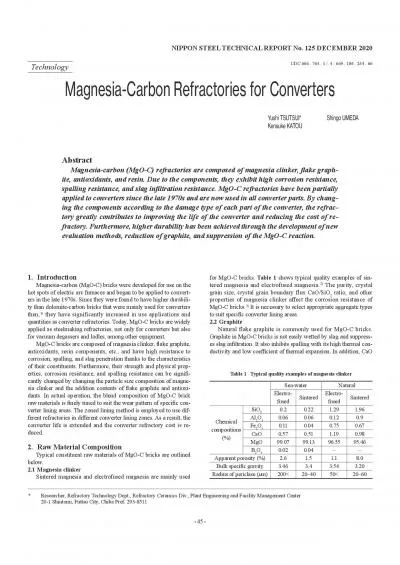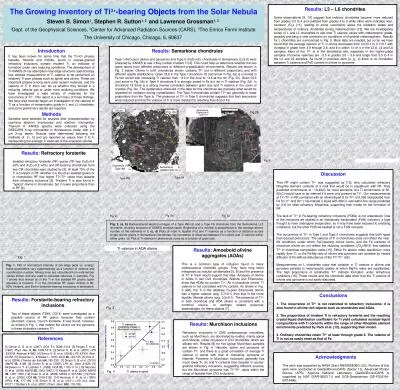PPT-Potential Temperature To calculate the original MgO content of a melt, a certain amount
Author : sophia2 | Published Date : 2022-05-14
composition in equilibrium with the Forichest olivine is obtained This approach may be VERY DANGEROUS Potential Temperature Follow this sequence Analyze with EMP
Presentation Embed Code
Download Presentation
Download Presentation The PPT/PDF document "Potential Temperature To calculate the ..." is the property of its rightful owner. Permission is granted to download and print the materials on this website for personal, non-commercial use only, and to display it on your personal computer provided you do not modify the materials and that you retain all copyright notices contained in the materials. By downloading content from our website, you accept the terms of this agreement.
Potential Temperature To calculate the original MgO content of a melt, a certain amount: Transcript
Download Rules Of Document
"Potential Temperature To calculate the original MgO content of a melt, a certain amount"The content belongs to its owner. You may download and print it for personal use, without modification, and keep all copyright notices. By downloading, you agree to these terms.
Related Documents

